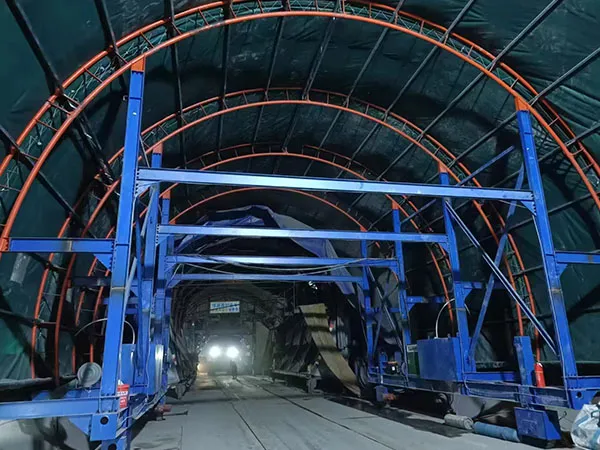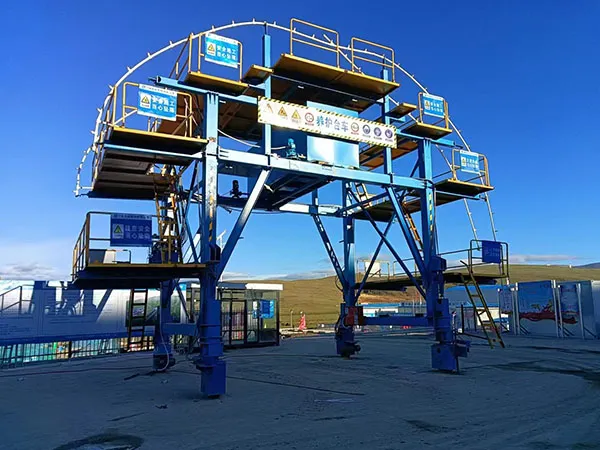Tunnel lining plays a critical role in ensuring the structural stability, safety, and durability of underground construction projects. As the permanent support structure, the lining must withstand ground pressure, water ingress, and long-term environmental influences while maintaining serviceability throughout the tunnel’s lifespan. To achieve these objectives, stringent quality control measures are essential during design, material selection,manufacturing,and construction phases.
Quality control in tunnel lining involves systematic monitoring and inspection to verify that materials, dimensions, installation methods, and finished structures meet specified standards and project requirements. This process not only helps to prevent defects such as cracks,misalignment, and water leakage but also enhances the tunnel’s operational reliability and reduces future maintenance costs.

Detailed Geotechnical Investigations: Thorough understanding of ground conditions (rock type, soil, water table, faults) is paramount. This informs the design of the lining, material selection, and construction methods.
Appropriate Lining Design: The design must consider anticipated loads (ground pressure, water pressure, seismic activity), service life, and environmental factors.
This includes selecting the correct lining thickness, reinforcement, and material (e.g., sprayed concrete, precast segments, cast-in-place concrete).
Material Specification: Clearly define the required properties for all materials, including concrete strength, durability, workability, aggregate quality, admixtures, and reinforcement steel.
Quality Management Plan (QMP): Develop a comprehensive plan outlining all quality control (QC) and quality assurance (QA) procedures, responsibilities, inspection points, and documentation requirements.
A. Material Quality Control:
Aggregates:
Sampling and Testing: Regular testing for gradation, soundness, cleanliness (silt/clay content), organic impurities, and moisture content.
Storage: Proper storage to prevent contamination and segregation.
Cement:
Source Approval: Ensure cement comes from approved manufacturers.
Testing: Check for fineness, setting time, soundness, and compressive strength.
Storage: Protect from moisture.
Admixtures:
Verification: Ensure type and dosage are as per design.
Testing: Confirm effectiveness and compatibility with other materials.
Reinforcement Steel:
Mill Certificates: Verify grade, dimensions, and mechanical properties.
Inspection: Check for rust, damage, correct bending, and placement.
Water:
Potability: Ensure water used for concrete mixing is clean and free from harmful impurities.
B. Concrete Production & Placement (for Cast-in-Place or Sprayed Concrete):
Batching Plant Control:
Calibration: Regular calibration of weighing and measuring equipment.
Monitoring: Strict control over batching sequence and mixing time.
Fresh Concrete Testing:
Slump Test: To check workability and consistency.
Air Content Test: For air-entrained concrete, crucial for freeze-thaw resistance.
Temperature: Monitor concrete temperature, especially in hot or cold weather.
Density: For specific applications.
Formwork (for Cast-in-Place):
Inspection: Check for cleanliness, alignment, rigidity, leaks, and release agent application.
Dimensions: Verify formwork dimensions and tolerances.
Reinforcement Placement:
Spacing and Cover: Ensure correct spacing, lap lengths, and concrete cover using spacers and chairs.
Tying: Proper tying to prevent displacement during concrete placement.
Concrete Placement:
Vibration: Adequate and uniform vibration to achieve compaction, remove air voids, and ensure full contact with reinforcement and ground. Avoid over-vibration.
Lift Heights: Control lift heights to prevent cold joints.
Sprayed Concrete (Shotcrete):
Nozzleman Skill: Highly skilled and certified nozzlemen are essential.
Rebound Control: Minimize rebound through proper mix design and application technique.
Layer Thickness: Achieve specified layer thickness in multiple passes.
Adhesion: Ensure good adhesion to the substrate.
Core Testing: Take cores for compressive strength and thickness verification.
Curing:
Moisture Retention: Critical for strength development and durability. Methods include water spraying, wet mats, curing compounds, or membrane curing.

Duration: Maintain proper curing for the specified duration.
C. Precast Concrete Segment Erection:
Segment Manufacturing:
Mould Quality: High-quality, precise moulds are essential.
Concrete Control: Strict control over concrete mix, casting, and curing in a controlled factory environment.
Dimensional Tolerances: Rigorous checks for dimensions, flatness, and bolt hole alignment.
Durability: Ensure segments meet durability requirements (e.g., permeability, carbonation resistance).
Handling & Storage:
Careful Handling: Prevent damage during transport and storage.
Proper Stacking: Stack segments to prevent distortion.
Erection:
Accuracy: Precise positioning and alignment of segments using jacking systems.
Gasket Installation: Correct installation of gaskets for watertightness.
Bolting/Connection: Proper torquing of bolts or other connection mechanisms.
Annulus Grouting: Thorough grouting of the annular gap behind the segments to provide support and transfer loads.
D. Post-Construction & Monitoring:
Non-Destructive Testing (NDT):
Rebound Hammer: To estimate concrete compressive strength.
Ultrasonic Pulse Velocity: To detect voids, cracks, and assess concrete quality.
Ground Penetrating Radar (GPR): To detect reinforcement, measure cover, and identify subsurface anomalies.
Core Sampling:
Compressive Strength: Direct measurement of concrete strength.
Thickness: Verify lining thickness.
Visual Inspection: Examine for voids, segregation, and bond quality.
Visual Inspections: Regular inspections for cracks, spalling, water ingress, and other defects.
Instrumentation & Monitoring:
Strain Gauges: To measure stresses and strains in the lining.
Pressure Cells: To monitor ground and water pressure.
Extensometers: To measure ground deformation.
Surveying: Regular surveys to detect any deformation or displacement of the lining.
Repair & Maintenance: Prompt repair of any defects or deterioration observed during monitoring.
Quality control of tunnel lining is a systematic process combining good design, high-quality materials, precise construction, continuous monitoring, and rigorous testing. Neglecting any step can compromise tunnel safety and longevity.
Gaofei
Address: 200m east of tulip garden, group 12 of zhangling community, hongshan street office, hongshan town, xigong district, Luoyang
Tel: +8616638856888
Contact: Gaofei Huang
Mobile: +86-18637923976
Phone: 0379-80881719/ 0379-60162687
QQ: 286827457
E-mail: gaofei@gf-bridge-tunnel.com